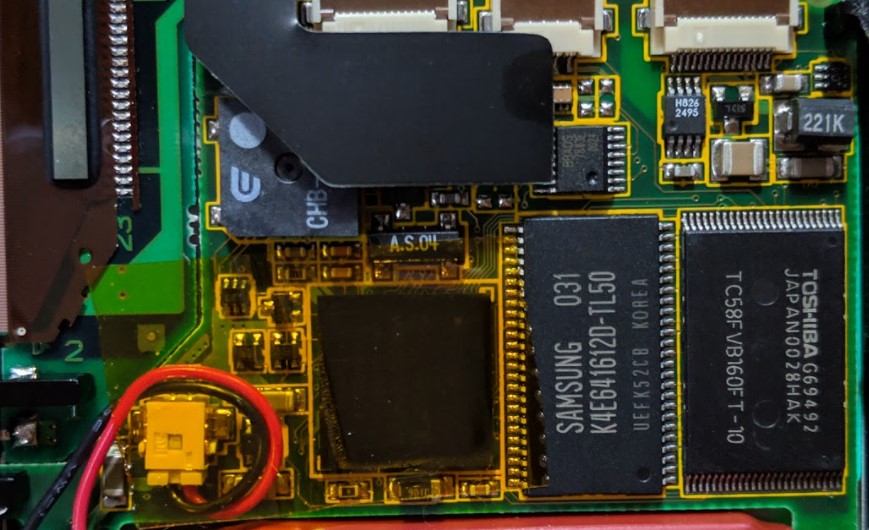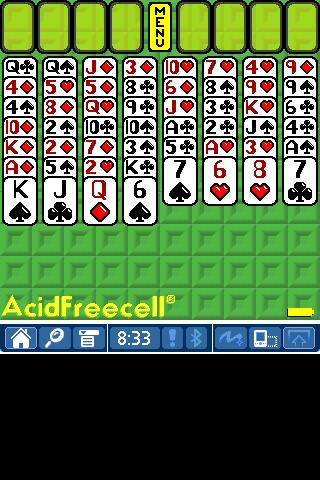The following guide was submitted by community member User5518 and was originally published on palm2000.com. Want to contribute? Submit your own guide for a chance to be featured!
How to rescue a LifeDrive by replacing a dead MicroDrive
The Palm LifeDrive, known as a "Mobile Manager", is the only Palm PDA with an actual hard disk drive. This has the advantage of (for the time) massive storage capacity, but also some downsides. The drive is very slow, and since the OS itself is also stored on the drive, every task (e.g. starting an application) can take quite some time. Also, the drive has moving parts, so over time, it can crash.
A broken MicroDrive does not mean a dead LifeDrive. Of course the data is lost, if no backup was created, but the device itself can be repaired.

A LifeDrive can be equipped with a CF Card. This tutorial describes how to do this with a working LifeDrive. But this tutorial is about a broken one.
For the repair, are some parts necessary:
- A LifeDrive with a dead MicroDrive (obviously)
- A suitable CF Card (not every CF Card works!)
- The partition table and ROM file from palmdb.net
- Some knowledge about Linux is nice to have, but not required
You can find a list with cards which are working here.
If you know how to use dd, you can save some time and continue with the "short version" of the tutorial. Otherwise, the short version is followed by a longer version with more detailed steps.
Short version
- Unzip the file from the link above and run these commands:
dd if=table.sct of=/dev/sdc conv=notruncdd if=rom-partition of=/dev/sdc seek=134079 bs=512
(Replace /dev/sdc with your CF-Device.)
Place the newly flashed CF Card in your device, and you are done.
Long version
- Boot up your favorite Linux distribution (e.g. Ubuntu 20.04 LTS 64Bit). A VM should work too.
- Insert your CF Card you want to flash into your computer.
- Find the CF Card-device with the
lsblkcommand (just run it in a terminal). The easiest way to identify the CF-device in thelsblklist is to compare the size. The name issdc(for example), but we need the complete path, which is always/dev/sdc. (It can be/dev/sdb,/dev/sddetc. in your case.) - Unzip the file from palmdb.net and navigate in the terminal to it. (e.g.
cd ~/Downloads/ && unzip lifedrive_rescure_for_crashed_MicroDrive.zip && cd lifedrive_rescure_for_crashed_MicroDrive– You may need to change the directory depending on where you downloaded the zip file. The~is a shortcut for your home directory:/home/, where your Desktop, Downloads, Documents, and so on are stored. - Now, run
ls -lato make sure that the files "rom-partition" and "table.sct" are shown. Run this command first:
dd if=table.sct of=/dev/sda conv=notruncReplace
/dev/sdcwith your CF Card/MicroDrive device from step 3. If the command does not work, writesudobefore it:sudo dd if ...and enter your root password, which you defined during the Linux installation.- Wait until the command has finished.
Run this command next:
dd if=rom-partition of=/dev/sda seek=134079 bs=512Again replace
/dev/sdcwith your CF Card/MicroDrive device from step 3. If the command does not work, writesudobefore it:sudo dd if ...and enter your root password, which you defined during the Linux installation.- Wait until the command has finished.
Shutdown your Linux machine with:
sudo shutdown -h now(It is easier than unmounting and ejecting the CF Card ;-) )
- Connect the CF Card to your LifeDrive and be careful with the MicroDrive connector in the LifeDrive--it can be very fragile!
- The last step is, of course, to power the LifeDrive on. It should boot without problems. If not, check if the CF Card is supported and the connector cable is not damaged.
In the end, you should have a working LifeDrive. Since the CF Card has no moving parts, it should last longer than the MicroDrive. Also, it provides better performance and consumes less power, which means better battery life.
Notice
PalmDB is proudly hosted by fans for fans and is not affiliated with the former Palm Computing company or its current rights holders in any official capacity. While we are not able to provide official support, if you appreciate our efforts to keep Palm alive, please consider donating to PalmDB! Also, join the Discord community for discussion of all things Palm and Pocket PC!











